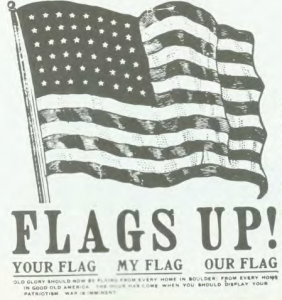This coming Thursday, April 6, will mark the 100th anniversary of America’s entry into World War I. Europe had been embroiled in the Great War since 1914, but U.S. President Woodrow Wilson had vowed to keep Americans out of the conflict. As the bloody war dragged on, however, it became apparent that the United States could no longer sit on the sidelines. Several U.S. ships had been damaged or sunk by German mines in the Atlantic, and when the British passenger ship Lusitania was torpedoed in 1915 — resulting in the deaths of 128 Americans — public opinion began to favor going to war with the Germans. Many statesmen such as former President Theodore Roosevelt urged American entry into the war, but Wilson resisted. By the late winter of 1917, however, the Germans had sunk several more American ships, and on April 2 Wilson finally asked Congress for a declaration of war. The vote passed the Senate on April 4 and the House on April 6.

From the spring of 1917 through the war’s end on November 11, 1918, more than 43,000 Coloradans served in the military, including soldiers and nurses “over there” as well as those filling military roles stateside. Colorado Governor Julius Gunter wrote in the Rocky Mountain News that “our state is well advanced in preparation to bear its part and to do its share in all of the services President Wilson had in mind when he said: ‘It is not an army we must shape and train for war; it is a nation,’ and it further means that Colorado’s people, zealous to give their abilities and resources to the cause of the world’s democracy and liberty, are coordinated and unified in organizations that can quickly and effectively translate into action the policies of their chief executives, state and nation.”*
America’s participation in the Great War affected everybody, even schoolchildren. The Colorado Superintendent of Public Instruction issued A War-Modified Course of Study for the Public Schools of Colorado, which has been digitized by our library. Americans of German heritage were also affected, as they were targeted for their ethnic background even if they had been United States citizens their whole lives. An interesting article on this topic, “The Ordeal of Colorado’s Germans During World War I,” appears in the Fall 1974 issue of the Colorado Historical Society’s Colorado Magazine. That magazine’s successor, Colorado Heritage, also devoted the entire Winter 1992 issue to “The Turbulent Teens: 1910-1920,” to accompany the Colorado History Museum’s series of exhibits on each decade in Colorado history. This publication can be checked out in print from our library. Finally, you can read original newspaper accounts of Colorado’s reaction to the entry into war by visiting the Colorado State Library’s Colorado Historic Newspapers Collection.
- How to Spot the Differences Between Eagles and Hawks - August 16, 2021
- How Transportation Projects Help Tell the Story of Colorado’s Past - August 9, 2021
- Time Machine Tuesday: The Night the Castlewood Canyon Dam Gave Way - August 3, 2021